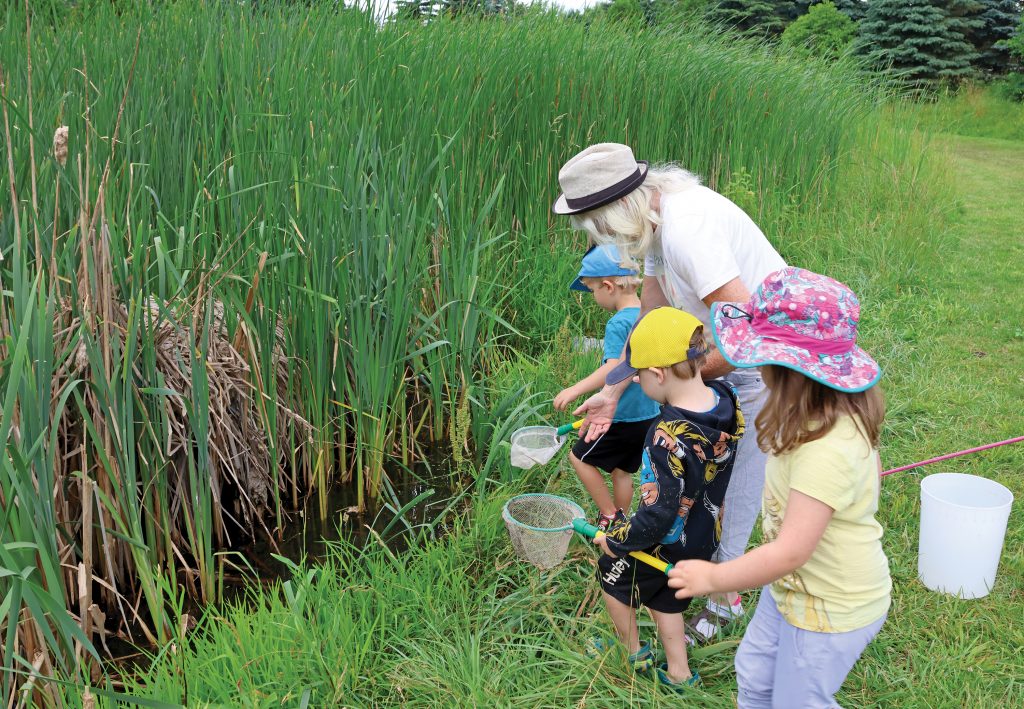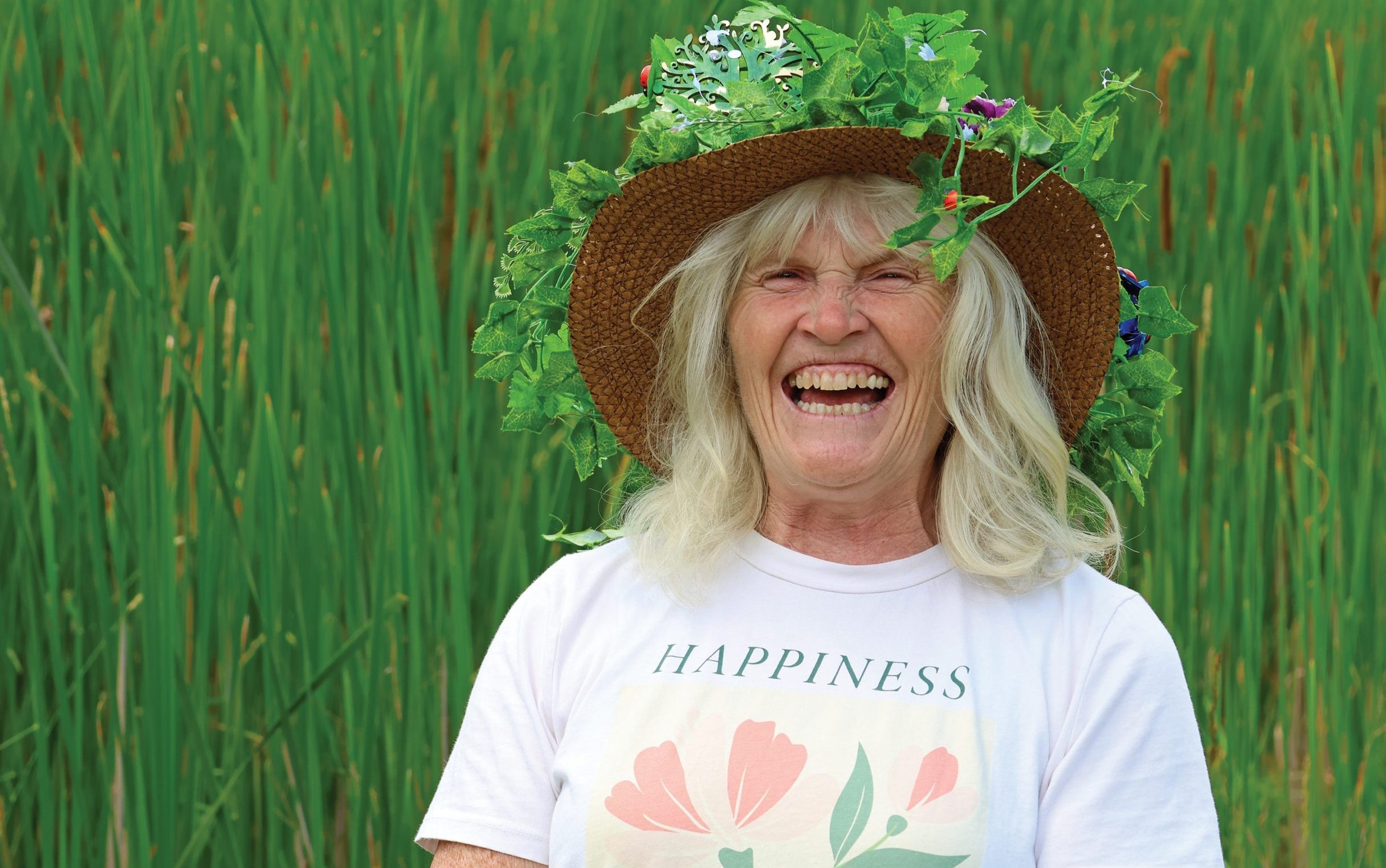FERGUS – Barbara Henneberry says she knew from an early age she would end up working with children.
She has now been in the field of early childhood education for 38 years, and this year she received a special honour for her work: a Prime Minister’s Award for Excellence in Early Childhood Education.
“I wouldn’t be able to do it without my team,” said Henneberry, acknowledging the support from the people she works with at the Community Resource Centre child care facility at J.D. Hogarth Public School in Fergus.
Henneberry, who works in the preschool program, recently returned from a three-day trip to Ottawa, where she and other award recipients took part in presentations to share “best practices” with one another.
“The best practice I have here with the children is nature,” Henneberry said.
After the nerve-racking experience of presenting to the group of teachers and early childhood educators who were also being honoured this year, Henneberry was back in her comfort zone in the outdoors near the child care centre.
Her preschool charges were engaged in gathering maple leaves for a Canada Day-themed art project, looking after some juvenile frogs they were soon to release in a nearby pond, and painting on mirrors the images reflected back from the sky.
“It’s very mindful,” said Henneberry, noting the outdoor activity seems to have a calming effect on children.
It’s part of the reason she spends so much time outdoors with the preschool children.
She is also following their lead in a way.
Henneberry said her nature program started eight years ago with a tree with a squirrel in it. The children noticed the squirrel during outdoor play and wanted to continue to visit the same tree and to learn more about the animal they spotted.

Registered early childhood educator Barbara Henneberry helps preschoolers release the frogs they raised from tadpoles in the classroom this spring.
Photo by Jessica Lovell
“We took the children’s interests and we grew what they wanted to do,” Henneberry said.
The program grew from there, encompassing the area around the preschool. They spend time playing in a field the kids have dubbed the “butterfly field,” in another area they named “bunny hill” because of rabbits spotted there, and they make weekly visits to the forested area next to Victoria Park.
“The children have named the nature spots,” Henneberry said, noting how observant they are about their surroundings and how engaged they are in outdoor learning.
She has grown the program over the years, and the kids now have their own plot in the community garden at the neighbouring church, where at first she said they just wanted to dig up bugs and worms.
They are now growing beans and pumpkins they started indoors from seeds, and they spend time weeding and watering and learning about compost.
“It’s all a beautiful little observation lab here,” Henneberry said. “All this stuff we’re doing … these are life-long skills for these little guys.”
Taking part in the community garden is one of the ways Henneberry is also building community connections.
Another is the monthly visits the children make to the nearby retirement home for activities like a Halloween party, a Christmas concert or just sharing some story books together.
“Those two generations support each other in so many beautiful ways,” said Henneberry.
She said the children seem to know by instinct how to behave, and similar to their experiences in nature, their interactions with their “grand friends” help to build empathy, she said.
Henneberry grew up in Alma, and studied early childhood education at Conestoga College.
Her very first job was at College Heights Secondary School, where she was part of a team looking after the kids of teenage mothers who had come back to school.
Reflecting on the differences between child care then and now, she said she believes child care practice used to be more teacher-directed.
“Now, we do follow the children’s lead,” she said.
This is something Henneberry does not just by observing the children’s interests, but also their needs.
“My son was anxious as he began daycare,” wrote one parent, Jessica Harrison, in a letter supporting Henneberry’s nomination for the Prime Minister’s Award.
“Barb ensured to tailor the curriculum to support every child in her classroom and my son was no exception.”
It is a sentiment that was echoed by another parent, Katrina Burch, in the supporting letter she wrote.
“Barb, or Barbie as we call her, exudes everything you would want when leaving your most precious being with someone,” Burch wrote.
“She learns about each child, what their interests are, and how the family can be best supported to ensure success.”
Henneberry spoke about the importance of connection with the families, listing the many activities she does to help build those connections.
These include things like regular family open houses, a family dinner, Mother’s Day and Father’s Day events.
“The families are not just important; they’re everything to us, and we build that sense of belonging,” she said.
Henneberry has worked at the J.D. Hogarth child care centre for 13 years, and said the time has flown by.
“I don’t know where the time went, to be honest,” she said.
She added the children inspire her, and she hopes to continue working with them indefinitely.
She came away from Ottawa having made some new connections with some other educators who also received awards, and with some new insights about education.
She noted that whether it was a high school teacher or a pre-school teacher, there are commonalities in the way they spoke about being inspired by and inspiring students.
Following her presentation in Ottawa, Henneberry said one of the high school math teachers approached her to comment on the pattern he had noticed on the pinecone she had used during her presentation.
She smiled at the thought that he was remarking on the same pattern her preschoolers had noticed. She said both she and the high school teacher understood the value of that learning opportunity.
“We were coming back with the same language,” Henneberry said.
“It starts in the early years.”



